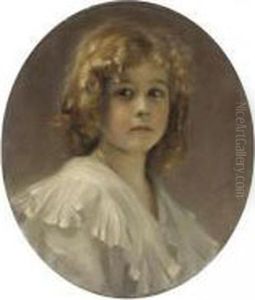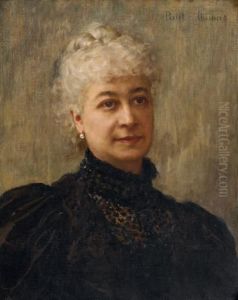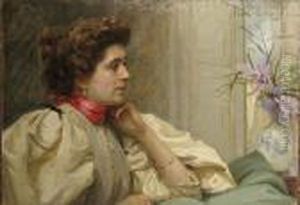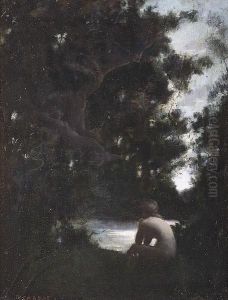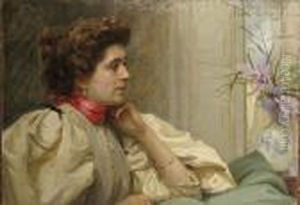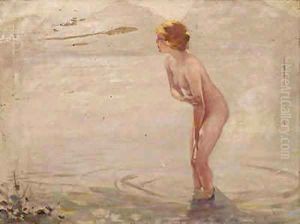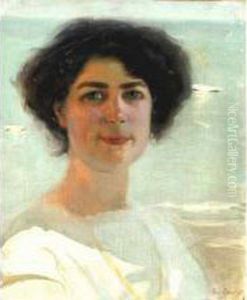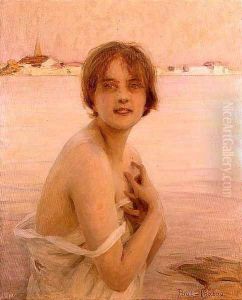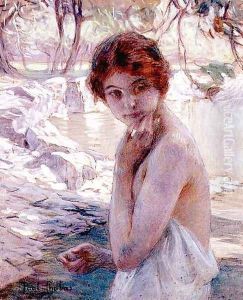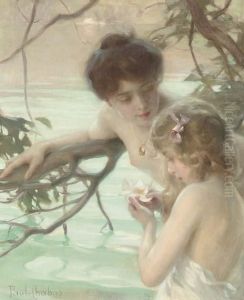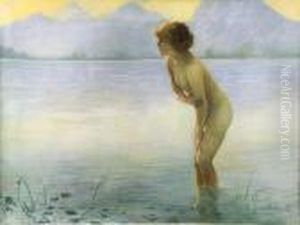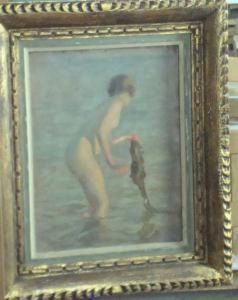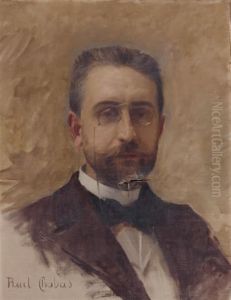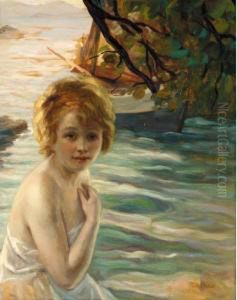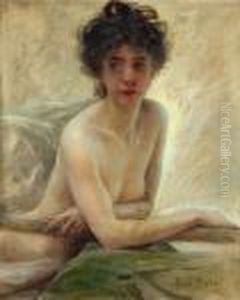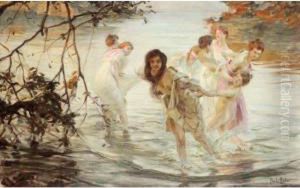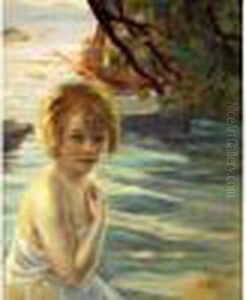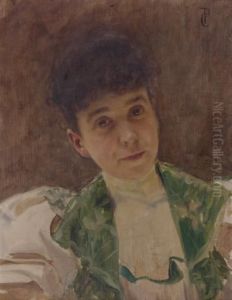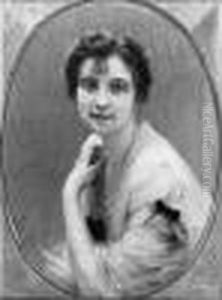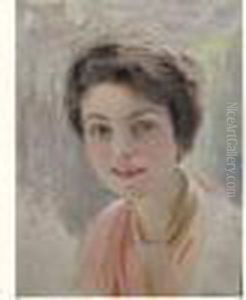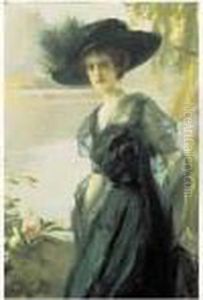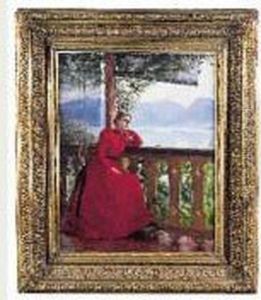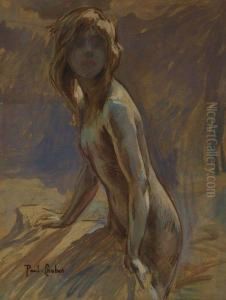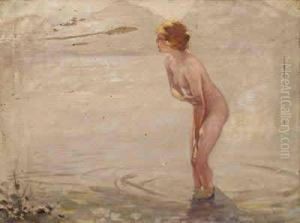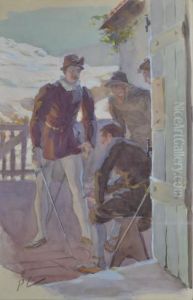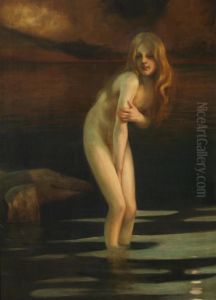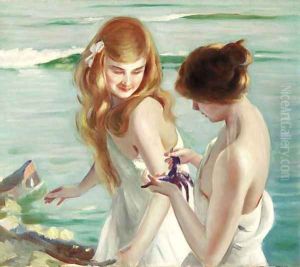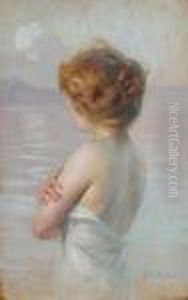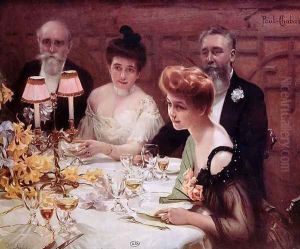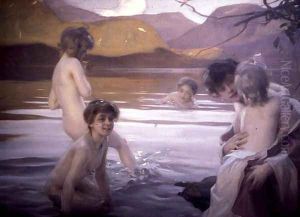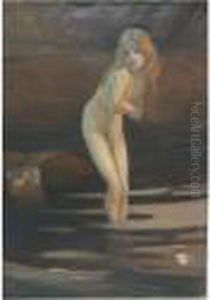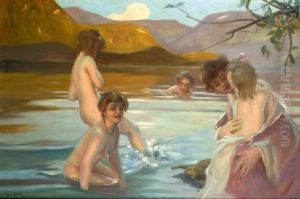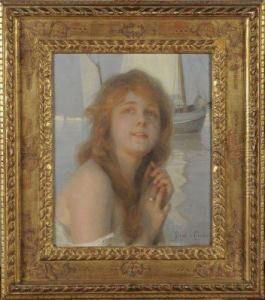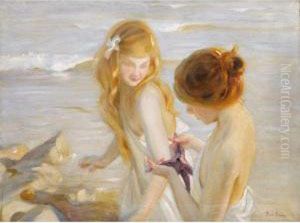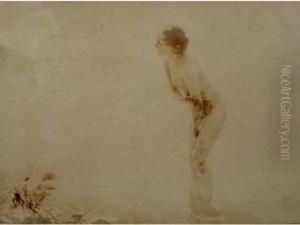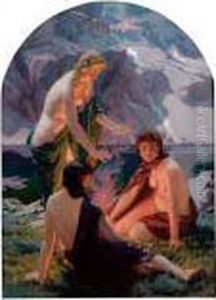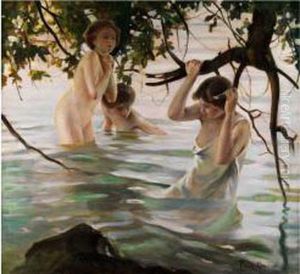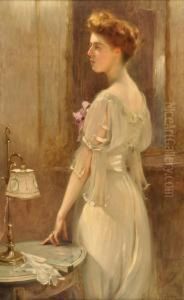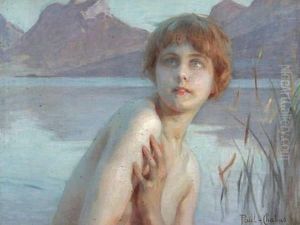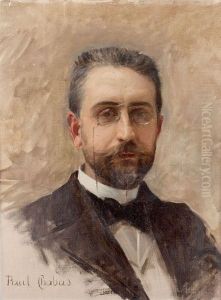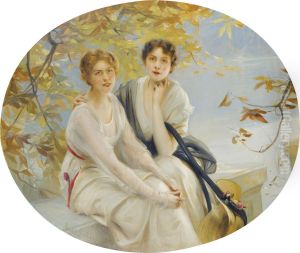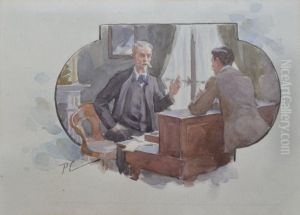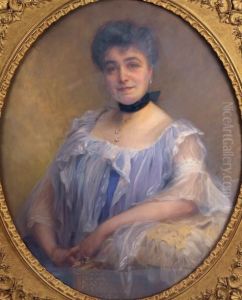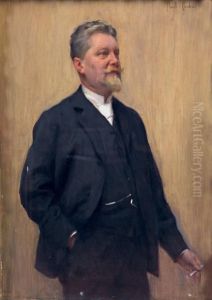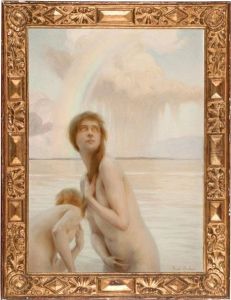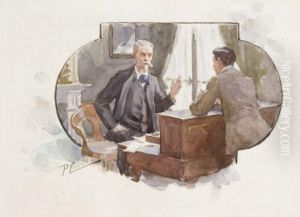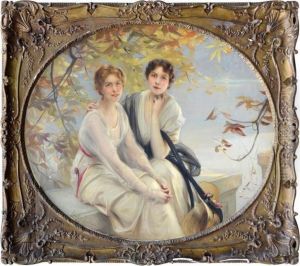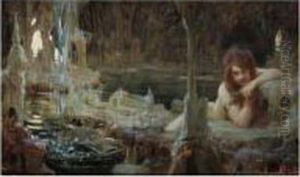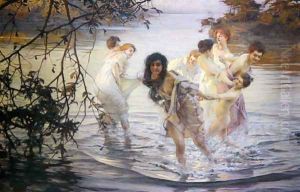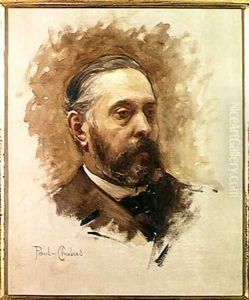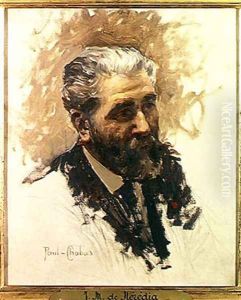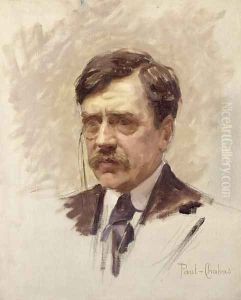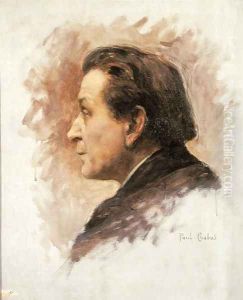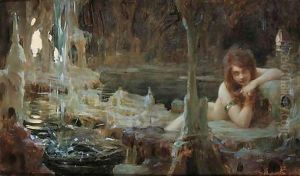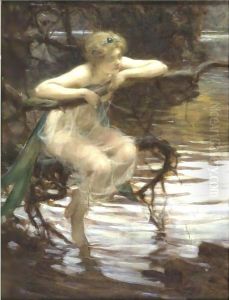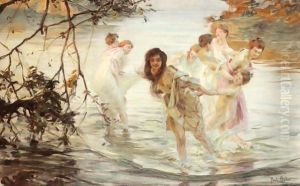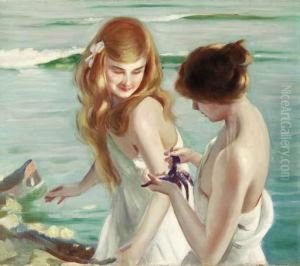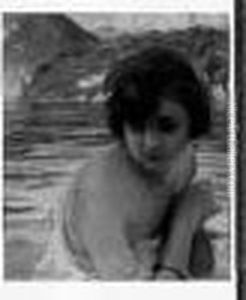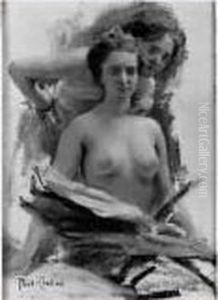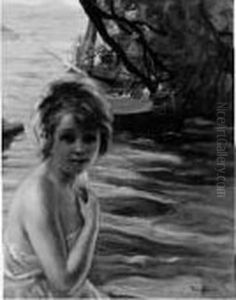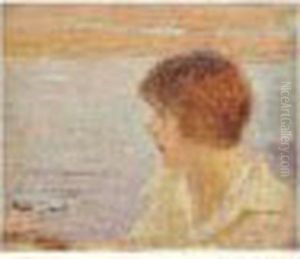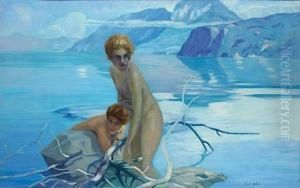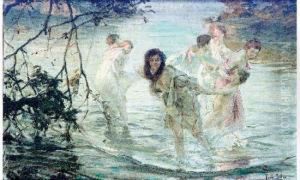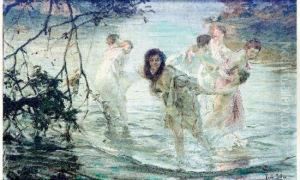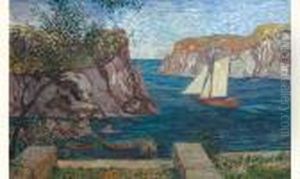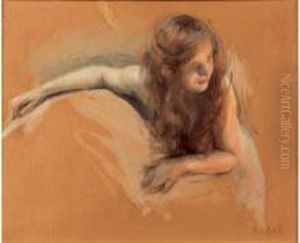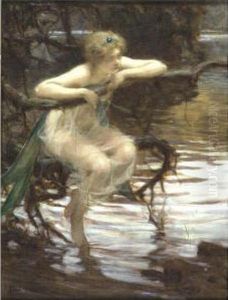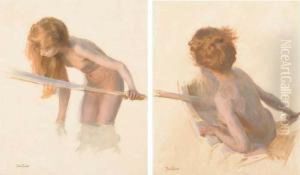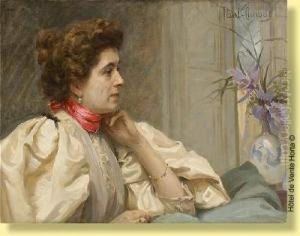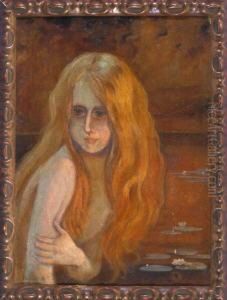Paul Chabas Paintings
Paul Émile Chabas was a French painter and illustrator, born on March 7, 1869, in Nantes, France. He is most widely remembered for his paintings of nudes and for his work 'September Morn,' which stirred controversy and gained immense popularity in the United States.
Chabas began his artistic education at the École des Beaux-Arts under the tutelage of William-Adolphe Bouguereau and Tony Robert-Fleury. His classical training was evident in his work, which was characterized by its academic style and often featured mythological or allegorical subjects.
In 1892, Chabas won the prestigious Prix de Rome, which allowed him to study at the French Academy in Rome, housed in the Villa Medici. This period was crucial for his artistic development as he was exposed to the Renaissance masters and the rich artistic heritage of Italy.
Upon returning to Paris, Chabas established himself as a successful portraitist and genre painter. He exhibited at the Salon des Artistes Français and received numerous awards, including a gold medal at the 1900 Exposition Universelle in Paris.
His most famous work, 'September Morn,' depicting a young nude woman standing in a shallow body of water, was created in 1912. Though initially exhibited without incident in Paris, the painting became the subject of a major scandal when it was displayed in a New York City window in 1913 and subsequently attacked by Anthony Comstock, a self-appointed enforcer of public morality. The controversy made the painting a household name, and reproductions were widely sold, cementing Chabas' reputation in the United States.
Throughout his career, Chabas also worked as an illustrator, contributing to various French magazines and books. His illustrations often showcased his skill in depicting the human form and his ability to convey delicate emotions.
Chabas was elected to the Académie des Beaux-Arts in 1921, and he continued to paint and exhibit until his death on May 10, 1937, in Paris. His works are now held in many museum collections across the world, and he is regarded as an important figure in early 20th-century French painting. Despite the varied subject matter of his oeuvre, he is primarily associated with his sensual and idyllic depictions of female beauty.
